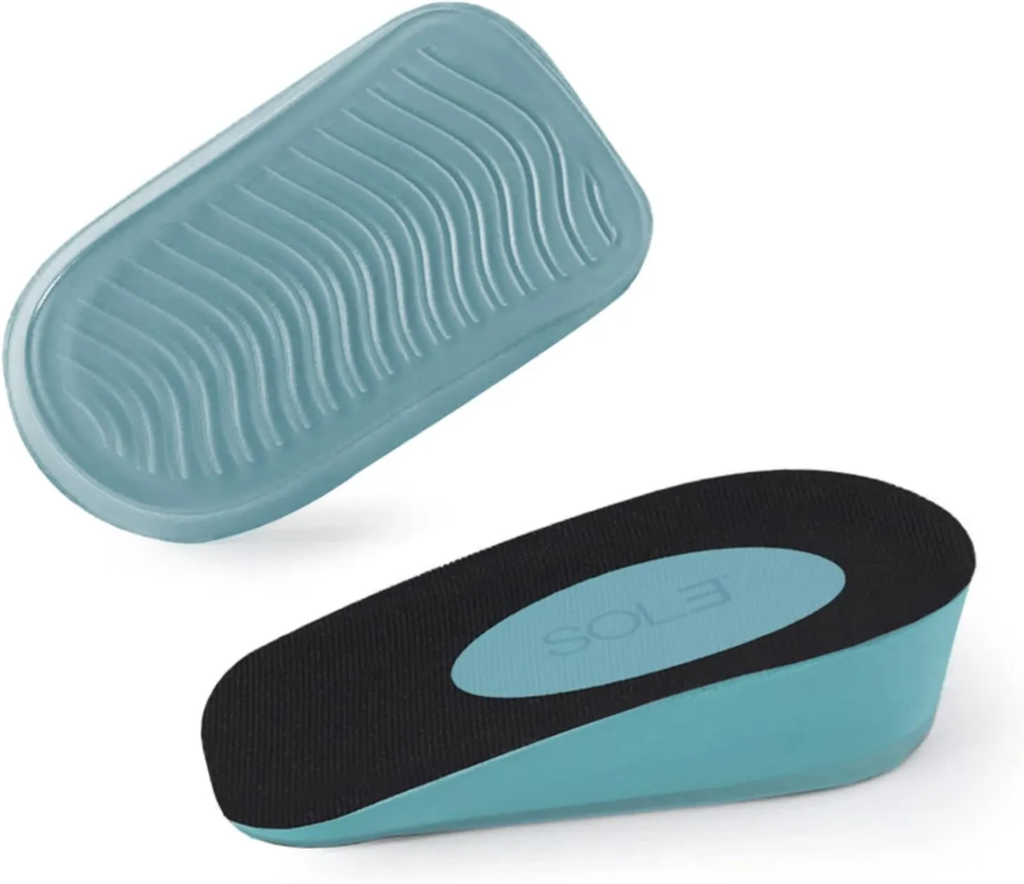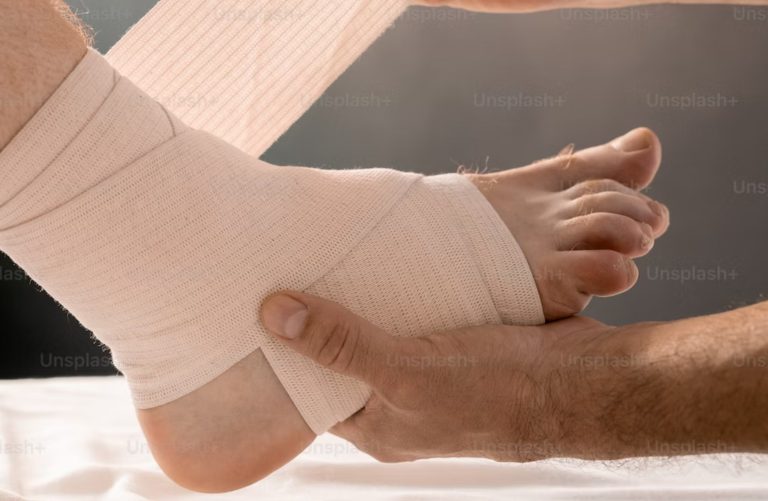Standing Tall: Do Height-Boosting Insoles Really Work?
Introduction
Insoles serve as inserts placed inside shoes that enhance comfort, provide arch support, and increase height.
Taller insoles utilize thicker materials to discreetly elevate the foot within the shoe.
When individuals wear shoes, their feet rest on the insoles provided. By opting for a thicker insole, users can effectively raise their foot position, adding a subtle lift.
These insoles replace the standard, thinner inserts that usually accompany footwear.
Height-boosting insoles incorporate features such as heel lifts and enhanced arch support.
The heel area is designed to be thicker, lifting the heel and contributing to a height increase.
Some insoles have a graduated design that slopes from heel to toe, offering a natural lifting feel.
The arch region also benefits from added cushioning, providing further support.
When combined, these elements can increase height by 1 to 3 inches.
The lift gained from using insoles is subtle and less obvious compared to traditional high-heel shoes, making them a comfortable alternative for those seeking a modest height boost.
Additionally, insoles are removable, allowing users the flexibility to revert to their original inserts as needed.
Advantages of Using Height Boosting Insoles
Wearing height boosting insoles offers several advantages that extend beyond merely increasing one’s height. Below are some key benefits:
Boost Athletic Performance: Some athletes, including basketball players, may utilize height booster insoles to enhance their vertical leap and reach.Even adding a single inch can contribute to improved performance.
Enhance Appearance and Confidence: Many individuals choose to wear height booster insoles to gain an extra 1-3 inches in height, which can significantly uplift one’s confidence.Feeling taller may lead to a greater sense of authority and self-assurance in both personal and professional situations.
Improve Posture and Alleviate Discomfort: Height increase insoles are designed to support proper body alignment, helping maintain a straight spine and providing necessary arch support.This support can ease strain on the back and joints, potentially relieving pain associated with conditions like arthritis.Comfortable insoles that provide adequate lift can make long periods of standing or walking less exhausting.
Enhance Mobility and Balance: For individuals with balance or mobility challenges, even a slight elevation from insoles can improve walking ability and stability.This extra lift reduces the distance to the ground, making movement easier.
Offset Age-Related Height Loss: As people age, they may lose a few centimeters in height due to changes in spinal and joint cartilage.Height boosting insoles offer a straightforward method to counteract this loss and help maintain confidence.
Reach Higher Easily: The added height from insoles allows individuals to access higher shelves and surfaces without difficulty.Tasks like retrieving items from elevated locations become simpler and more convenient.
How Much Height Can Insoles Add?
Height-boosting insoles typically provide an elevation of 1 to 3 inches. The specific increase in height largely depends on the insole’s design and thickness.
- 1-Inch Insoles: These offer a subtle lift, ideal for those who want a minor boost while maintaining comfort and discretion.
- 2 to 3-Inch Insoles: These provide a more significant height increase, making it noticeable. However, they might also pose challenges when walking.
A few specialized insoles may claim to add up to 5 inches. Caution is advised with such options, as insoles thicker than 3 inches are usually not suitable for daily wear.
The steep elevation can lead to discomfort and impacts mobility.
Key Considerations:
- Comfort: Always prioritize comfort when choosing height-increasing insoles.
- Mobility: The best insoles should elevate height without hindering movement.
- Testing: Experiment with various thicknesses to determine the most suitable height increase.
For most individuals, a comfortable insole will likely fall in the 1 to 2-inch range, providing the desired lift without compromising stability.
Types of Height Increasing Insoles
There are several types of insoles that can add height:
Heel Pads
Heel pads are a widely used type of height-boosting insole. These small pads are placed under the heel of the shoe, effectively raising the heel off the ground.
Heights can vary from 1 to 3 inches. Since the forefoot remains on the standard shoe sole, they are comfortable for walking and are compatible with most shoe styles.
Height-Boosting Footwear
Height-boosting footwear features a built-in elevated insole. This design lifts both the heel and the forefoot, providing an elevation of about 2 to 5 inches.
The shoes retain a normal appearance, making the added height less noticeable. Users often need to practice walking in these shoes to ensure comfort and stability.
Complete Insoles
Full insoles offer a different approach to adding height. They sit inside the shoe and elevate the entire foot rather than just the heel.
Typically ranging from 1 to 3 inches in height, these insoles are made from durable materials to provide solid support.
Users may need a brief adjustment period to walk naturally with these insoles, which are suitable for shoes that allow for removable insoles..
Arch Elevators
Arch elevators are insoles designed to lift the arch of the foot, adding a subtle height increase of 0.5 to 1.5 inches.
They not only enhance height but also offer additional support and comfort, making them a practical choice.
These insoles often have a tapered structure to discreetly raise the rearfoot more than the forefoot and can be worn with various types of footwear.
Important Features to Consider When Choosing Insoles
When selecting height-increasing insoles, several essential features can make a significant difference in comfort and effectiveness.
Comfort
The insoles should feel pleasant while being worn. It is vital to have adequate cushioning and arch support to minimize foot discomfort.
Materials like gel or foam are beneficial for alleviating pressure.
Buyers should avoid insoles that are either overly firm or excessively soft, as they can lead to discomfort over time.
Ensuring that the insoles do not rub against the foot or feel constricting is crucial.
Stability
Stability plays a key role in balance and posture when using height boosters.
It is important to look for insoles with anti-slip bottoms that grip the shoe securely, as well as sturdy heel cups that hold the foot in position.
Some insoles even include stabilizer bars for added support.
Buyers should steer clear of insoles made from flimsy materials that tend to compress easily.
Quality Materials
Durability and quality are paramount when it comes to the materials used in insoles.
High-quality options like medical-grade polymers, carbon fiber plates, and ethylene-vinyl acetate (EVA) foam are excellent choices.
Additionally, leather or suede exteriors can enhance comfort.
It is best to avoid cheaper foam or fabrics that are likely to wear out quickly.
Customizable Options
Many height-boosting insoles offer adjustable features that allow users to tailor the height increase and arch support to their preferences.
Options may include varying elevation levels and interchangeable layers.
Some models have removable pads or Velcro sections, allowing for a personalized fit.
This adaptability helps in starting with a lower height and gradually increasing it for a smooth adjustment.
Top Brands of Height-Enhancing Insoles
There are a few brands that stand out when it comes to quality height increasing insoles talelr.
Roamingfeet

Roamingfeet is a leading name in the market for height-boosting insoles. They provide various options that add from 1 to 3 inches of height.
Using high-density foam along with gel padding, these insoles focus on comfort while elevating the wearer.
They are durable and offer excellent arch support, making them suitable for both men and women.
SOL3 Quick Lifts

SOL3 insoles feature unique patented designs that help distribute weight evenly across the foot.
This reduces stress on the feet, knees, and lower back, providing additional comfort while increasing height.
Their insoles can be easily trimmed to fit various shoe sizes and are made from materials that absorb sweat and resist bacteria, making them a practical choice for anyone seeking daily wear comfort.
Skyfoot’s Height Increase Insole

Skyfoot’s insoles are crafted to add between 1.5 to 3 inches in height.
They boast a low-profile design that remains hidden under clothing.
Using layered cushioning and impact-absorbing materials, these insoles prioritize comfort and support.
Additionally, they incorporate moisture-wicking fabrics that keep feet dry and come in stylish patterns, appealing to those who want a fashionable look while increasing their height.
Selecting the Proper Size
Choosing the correct size of insoles is essential for comfort and achieving the desired height increase. Here are some guidelines to ensure the best fit:
Professional Fitting: Opting for a fitting at a specialty shoe store can provide significant benefits.Experts can measure feet and suggest the most appropriate insole size, tailored to individual foot dimensions and preferred shoe styles.This personalized approach helps eliminate uncertainty, leading to a better fitting process..
Foot Measurement: Accurately measuring foot length and width is critical. This should be done while standing, as weight affects foot size.For women, it is especially important to measure while considering the type of shoes intended for use, whether heels or flats.
Sizing Chart: Each insole brand typically offers a sizing chart.By comparing foot measurements to these charts, individuals can determine their correct insole size. These charts factor in additional space required for a comfortable fit.
How to Walk Properly with Insoles
Walking with height increasing insoles takes some getting used to. Here are some tips for walking properly with insoles:
Maintain Good Posture
- It is important for individuals to stand tall with their shoulders relaxed and back. Slouching can lead to discomfort and back issues.
- Engaging the core muscles provides essential support to the lower back, promoting a healthier walking posture.
- Distributing body weight evenly while walking helps prevent excess pressure on the front part of the feet.
Take Time to Adjust
- He should begin by wearing height-increasing insoles at home to acclimate to them before venturing outside.
- Starting with short wear times of about 1-2 hours per day can ease the transition, gradually increasing as comfort grows.
- Initially, taking smaller steps and walking at a slower pace aids in focusing on maintaining good posture.
- A little discomfort is normal at first, and individuals should allow their feet time to adapt to the additional height.
Wear Appropriate Shoes
Ensuring a proper heel fit is essential to prevent slippage and blisters while walking.
Choosing shoes that offer ample arch support and cushioning is crucial. Sneakers or boots are usually the most suitable options.
Avoid combining insoles with flat shoes, like ballet flats or flip flops, as these may lack the necessary support.
If shoes feel cramped with the added height, consider selecting half a size larger or opting for a wider fit.
Maintenance and Care
Taking good care of height-increasing insoles helps to prolong their lifespan. Here are some essential tips for maintenance:
Proper Storage: When not in use, insoles should be stored in a cool, dry location, away from direct sunlight. They should not be bent or compressed for extended periods.
Remove Regularly: Every evening, take the insoles out of the shoes. Allowing them to air dry prevents moisture buildup, which can lead to bacteria growth and unpleasant smells.
Clean Thoroughly: Users should wipe the insoles with a damp cloth to eliminate dirt, sweat, and debris from use. If necessary, a mild soap mixed with water can be applied, but complete submersion should be avoided.
Dry Completely: After cleaning, insoles must be left to air dry overnight. It is crucial not to place them close to direct heat sources, as this can damage the material.
Replace as Needed: Over time, insoles may lose their shape and cushioning. Signs of wear include flattened areas, cracks, or tears. For optimal comfort and height boost, replace them every 4 to 6 months.
Conclusion
Height-boosting insoles offer varying advantages that can enhance daily life for many individuals. These insoles can increase height by 1 to 5 inches, featuring designs that range from discreet lifts to more substantial platforms.
Key Benefits of Height-Increasing Insoles:
Maintenance Practices: Keeping insoles clean and allowing them to air dry will extend their lifespan. They should be replaced once the materials begin to compress and no longer offer ample lift.
Discreet Height Gain: Insoles can elevate a person’s height without being noticeable, fostering an increase in confidence and self-worth. Their hidden nature means that others are often unaware that the wearer is using them.
Posture and Alignment Improvement: Properly fitting insoles can enhance posture, which may help alleviate issues related to back, neck, and joint pain.
Material Quality: Opt for insoles crafted from high-quality substances like memory foam and gel. These materials conform to the foot, providing comfort and shock absorption.
Correct Fit: Accurate foot measurements are crucial to ensure insoles fit well. Poorly fitting insoles can lead to discomfort and blisters.
Gradual Adaptation: It is advisable to start wearing the insoles for short timeframes and gradually increase wear to adapt to the added height. Choosing suitable footwear and maintaining a natural walking style is important.
Frequently Asked Questions
What are the top insoles for increasing height?
There are many insoles that can boost height. Some popular choices include:
- Height Increase Insoles: These are designed to add 1 to 2.5 inches.
- Adjustable Layer Insoles: Some models allow users to change the height based on layers.
- Comfort-Focused Insoles: These provide both height lift and comfort for all-day wear.
Users should consider their comfort preferences and the specific height increase they want when selecting the best option.
Can insoles genuinely add inches to a person’s height?
Yes, height-boosting insoles can offer a noticeable increase in height. Most designs increase height by 1 to 3 inches, depending on the type and thickness of the insole. However, results may vary for each person. Achieving significant height increases typically requires thicker insoles, which may affect comfort.
Are there health concerns linked to using height-boosting insoles?
Using height-increasing insoles can lead to discomfort or foot fatigue, especially if they are too thick or not well-fitted. Some potential issues include:
- Foot Pain: Wearing inappropriate insoles may cause pain in the feet, legs, or back.
- Balance Issues: Thicker insoles can alter a person’s balance, making it difficult to walk comfortably.
- Posture Changes: Insoles designed for height might change a person’s natural posture, leading to long-term issues if not used properly.
It’s advisable to consult with a healthcare professional if you have concerns about using such products regularly.
Where can one find discreet height-boosting insoles?
Discreet insoles are available from various retailers, both online and in stores. Looking for options that are specifically marketed as “invisible” or “hidden” can help. Brands often offer slim designs that fit comfortably in most shoes without being noticeable.
How can comfort be maintained while using height insoles over a long time?
To ensure comfort during extended use of height-enhancing insoles, one can follow these tips:
- Choose the Right Fit: Insoles should match the size and shape of the shoes.
- Start Slow: Gradually increase usage time to allow feet to adjust.
- Use Quality Materials: Look for breathable and cushioned insoles for better support.
- Consider Footwear: Select supportive shoes that complement the insoles to aid comfort.
Do height-increasing insoles enhance athletic performance, like jumping ability?
While height-boosting insoles may provide a slight edge in height, they do not directly improve athletic performance. Benefits could include:
- Increased Stability: Properly designed insoles may enhance balance, affecting jumping technique.
- Comfort Support: Reducing discomfort can help athletes perform better, but this varies by individual.







